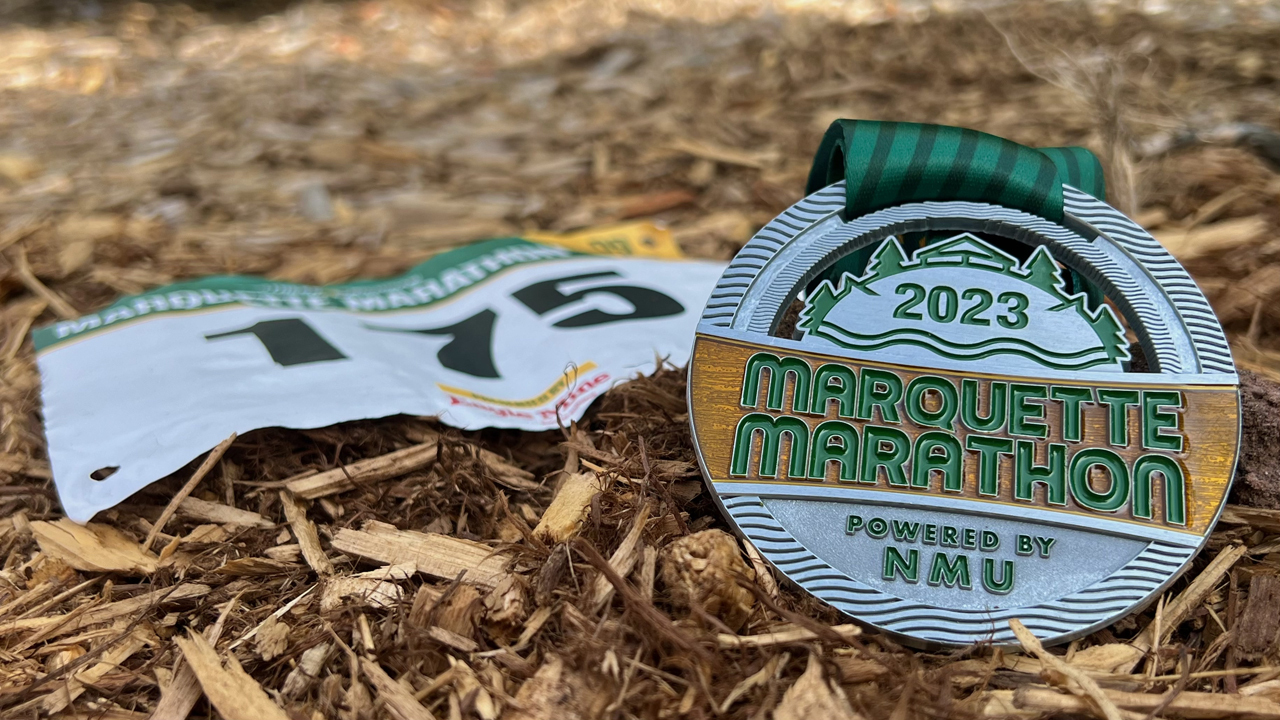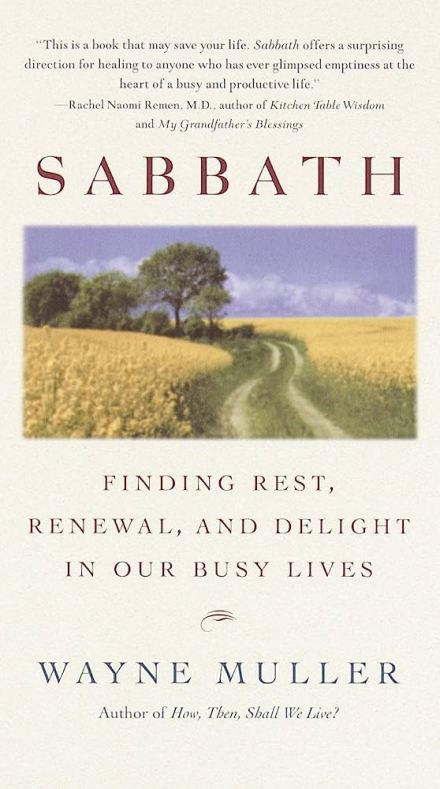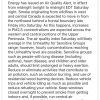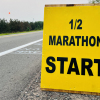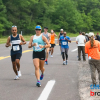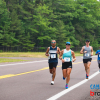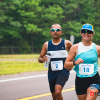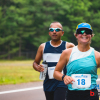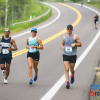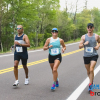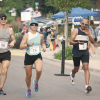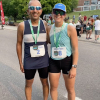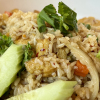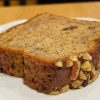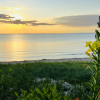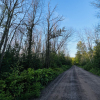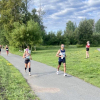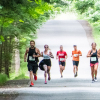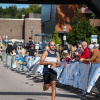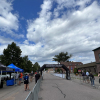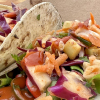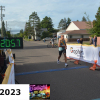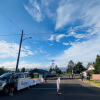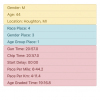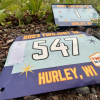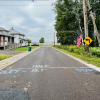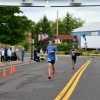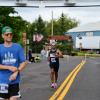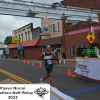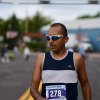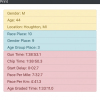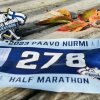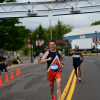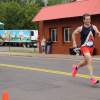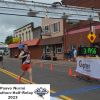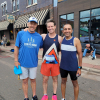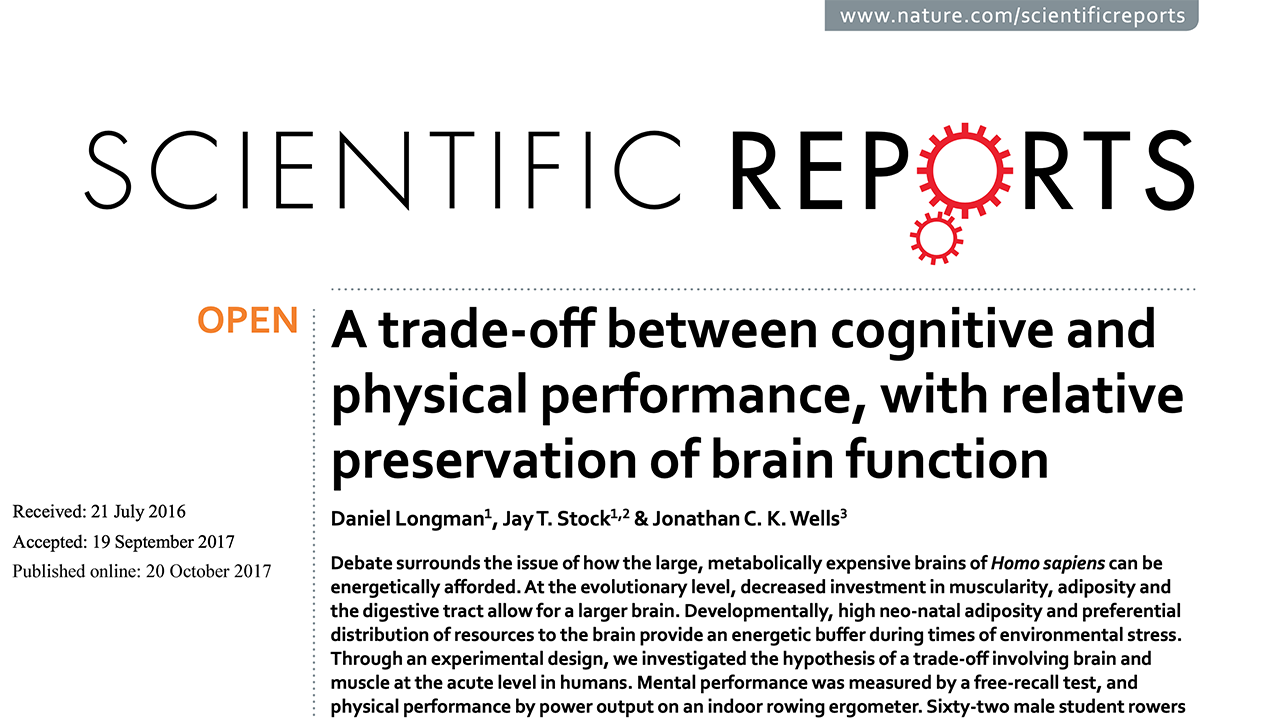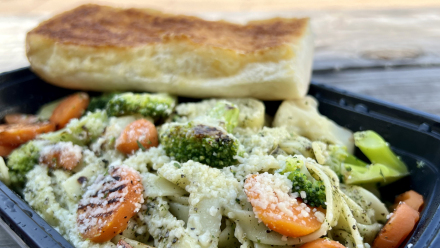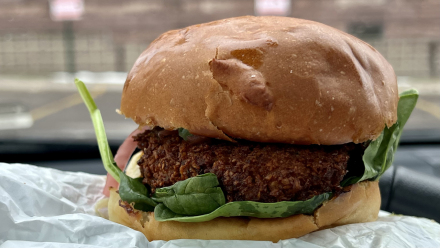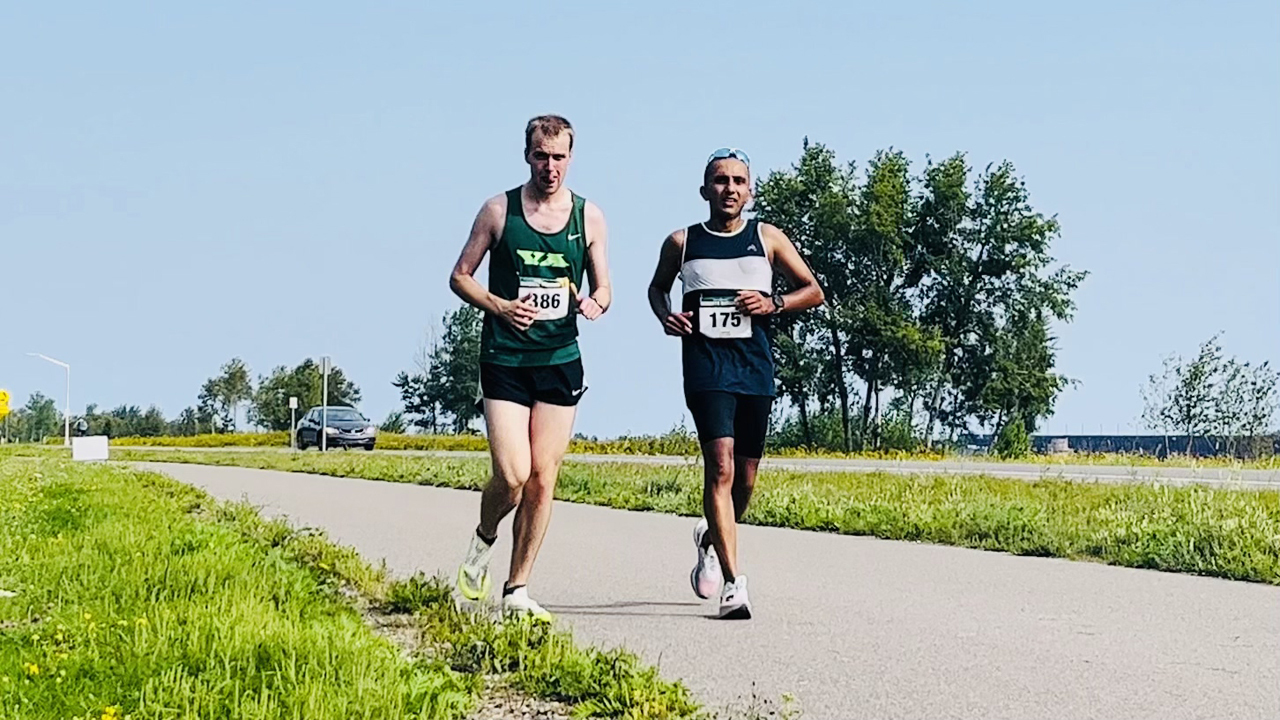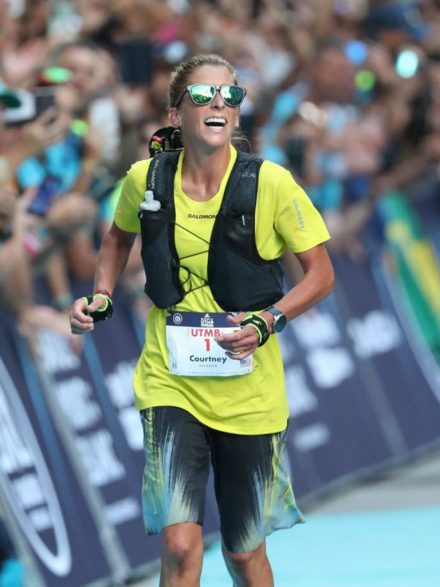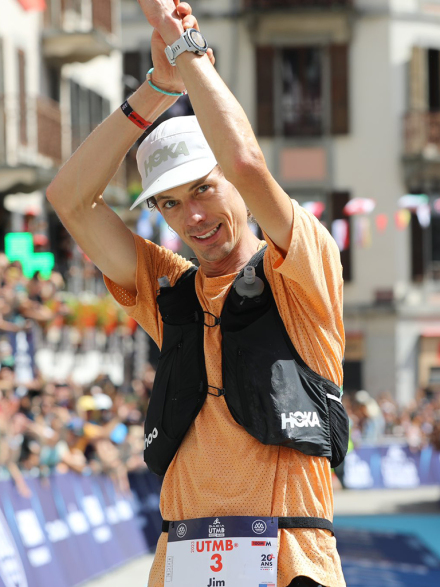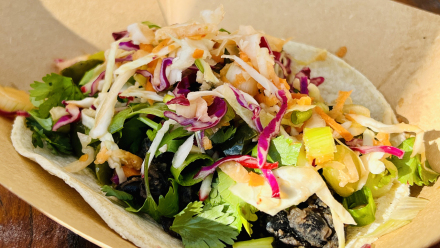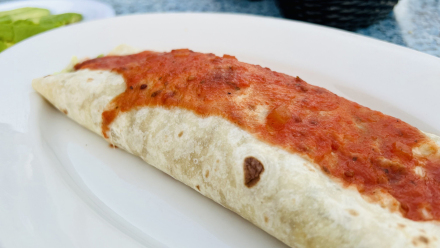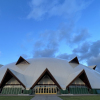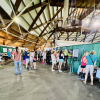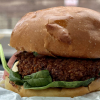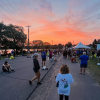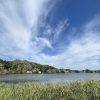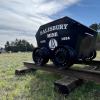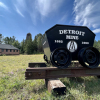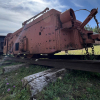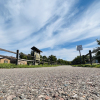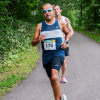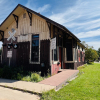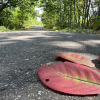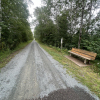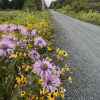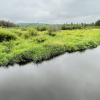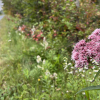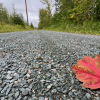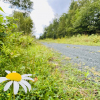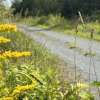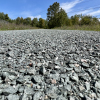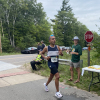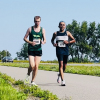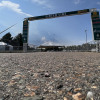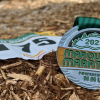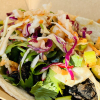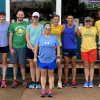Reflections on the 2023 Grandma’s Marathon and discussing relevant portions of the training log with the family indicated some aspects I could retain and some others that needed a little tweaking to continue racing a marathon. Faith-ing in the fitness gained over the past several months and trusting the athletic process were a bit easier on this go around. So was leaving some more room for cream and letting a missed repetition go or rescheduling an activity as the training plan progressed. The combination of heat and humidity got the better of me over the final 8 miles on race day, and I crossed the finish line with considerable help from an angelic fellow runner.
da Past Lessons
The summary of lessons prior to starting the aforementioned 2023 Grandma’s Marathon training had led me to implement some major changes to the structure of my training and the training log. These changes retained their relevance and value for the Marquette Marathon (and beyond). The itemized list of lessons (with some updates) is included below for my own quick reference and for the sake of completeness of this race report.
All along the Grandma’s Marathon training, I made detailed notes on a daily and weekly basis to and through the race day (e.g., what worked, what didn’t work, what I liked, what I didn’t like, what I was good at, what I got good at, what I needed to get good at, etc.). That race day performance from Two Harbors to Duluth was personally very beautiful, smooth and sublime … at least through the first 25 22 miles. Though the 5-mile splits were 38, 38, 38, 38 and 39 minutes, a closer and objective look showed that the loss of steam had started shortly after cresting the Lemon Drop Hill around mile 23 (and not just over the final 1.25-1.50 miles). Non-proximity of my potential/possible finish time to the required BQ standard was my initial explanation for this phenomenon. Subconsciously treating getting past mile markers 18 and 22.5 (locations where I had struggled mightily in 2019) as successes might have been another reason for the loss of steam to start around mile #23 – later referred to as unconscious complacency. Implementation of potential solution approaches to these Grandma’s-specific observations/learnings is included in the next section.
Putting the pre- and post- Grandma’s Marathon observations/learnings into continued practice …
- I took a conscious 10-day break after completing the 2023 Grandma’s Marathon to let the body and mind recover. I consumed plenty of hearty food and ran just enough (1-2 miles each day) to avoid stiffness/soreness.
- Choosing the Marquette Marathon as the target for an 8-week training plan in Autumn came after quite a bit of consideration.
- On the athletic side of things … This had been my first ever marathon in 2015. In spite of 2021 and 2022 ending in DNF, the event always has a fond and tender spot in my memory. Between various training runs and organized events, I had the advantage of knowing the entire course intimately well. Even if the event did not offer the pace group I was initially looking for, I believed the chances of redeeming myself with better preparation and execution were good.
- On the academic side of things … Based on the expressed interest by the dozen+ prospective students in Spring 2023, there was a very high probability that I’d be teaching my UN5390: Scientific Computing course at Michigan Tech in Autumn (starting date: 28th August 2023; race date: 2nd September 2023). So, traveling further than Marquette hadn’t seemed like a sensible option.
- I planned on using the opportunities to race shorter distances if they came along without jeopardizing the training. Setting aside a dedicated phase for any one of the shorter distances wasn’t feasible yet. But I found an innovative way to incorporate 13.1M into the training.
da Training Plan
After replicating the Grandma’s Marathon plan as is, I kept a majority of what had worked including its structural simplicity to avoid decision fatigue. The plan included sufficient variety to avoid the potential staleness or boredom. The first major change was transitioning from distance-based activities to time-based activities. The second major change was to integrate elements of cross country skiing … to continue puzzling together the annual training plan.
A couple of nudges from MikeY, a note from Scot and a discussion with Tom – all well before this training block got its start – helped me re-realize the value of rest/recovery. Contemplating these nudges, notes and discussions reminded me of my previous interpretation of Dr. Stephen Seiler‘s take on chasing (ir)relevant acorns and got me to re-read Sabbath, recommended by a dear friend during 2021-22 Winter. The latter’s title might indicate a religious scripture but, to me, it was a review-like work that explores the concept and value of rest, recovery and rejuvenation throughout time and various cultures around the globe. It presented the collective findings in a very poetic and palatable fashion as can be observed in the excerpts below.
… Because on the Sabbath, we are to remember not what grows with money but only those things that grow in the sweet soil of time. So that we can if only for a day, if only for an hour, if only for one single breath remember that those things that are most valuable, most precious, most holy, most sacred are not the things that we can count.
Sabbath is more than the absence of work; it is not just a day off, when we catch up on television or errands. It is the presence of something that arises when we consecrate a period of time to listen to what is most deeply beautiful, nourishing, or true. It is time consecrated with our attention, our mindfulness, honoring those quiet forces of grace or spirit that sustain and heal us.
Sabbath honors the necessary wisdom of dormancy. If certain plant species, for example, do not lie dormant for winter, they will not bear fruit in the spring. If this continues for more than a season, the plant begins to die. If dormancy continues to be prevented, the entire species will die. A period of rest – in which nutrition and fertility most readily coalesce – is not simply a human psychological convenience; it is a spiritual and biological necessity. A lack of dormancy produces confusion and erosion in the life force.
We, too, must have a period in which we lie fallow, and restore our souls. In Sabbath time we remember to celebrate what is beautiful and sacred; we light candles, sing songs, tell stories, eat, nap, and make love. It is a time to let our work, our lands, our animals lie fallow, to be nourished and refreshed. Within this sanctuary, we become available to the insights and blessings of deep mindfulness that arise only in stillness and time. When we act from a place of deep rest, we are more capable of cultivating what the Buddhists would call right understanding, right action, and right effort. In a complex and unstable world, if we do not rest, if we do not surrender into some kind of Sabbath, how can we find our way, how can we hear the voices that tell us the right thing to do?
Similar to Infinite Powers by Dr. Steven Strogatz, Sabbath too did not make any mention of or application to athletics. The second reading of Sabbath and reviewing my notes reiterated, to me, my previous interpretation of Sabbath in athletic endeavors as (a) rest (or recovery walk/jog) in between intervals/repetitions, (b) rest/recovery time each day, (c) a rest/recovery day once in a microcycle (or at least, keeping easy days easy so that hard days can be hard), (d) a recovery/step-back week after few weeks of building up, (e) a rest/recovery period in between training cycles, (f) an off-season after the major target event, and so on. In light of all this, it wasn’t difficult to stop chasing irrelevant acorns, and in turn, to keep the train(ing) from getting derailed even before it left the station.
By the time this plan got its start, I had been running consistently for about four months and had gotten better at running by feel and had included one rest day in most weeks. So, I felt there was a very low risk of an injury with another bout of sensibly aggressive training. Getting better at chunking the runs and distance and keeping a calmer mind, and learning to dig deeper to address unconscious complacency over the final miles and find a way to finish strong irrespective of the finish time’s proximity to a BQ standard were the process goals. Letting botched runs/workouts (in part or in entirety), retaining the Norwegian Double Tempo/Threshold workout, adding some spice to the long runs, assigning specific yet flexible goals to workouts and long runs helped make progress in the process-based goals.
Similar to Grandma’s, I felt it was an overkill to superpose a layer of block periodization on top of what was already a quite short training block (please see da Takeaways section for an update on this shortsighted idea). Rollerski outings, ski-specific strength sessions and dry land drills with Copper Country Ski Tigers (our community’s youth development program) helped stay on track for the upcoming 2023-24 Winter. Indoor bike rides and occasional hikes added to the weekly volume without jeopardizing the recovery.
|
2023-07-10 - 2023-09-03
Time in h:mm:ss, distance in miles (and kilometers), and elevation gain in feet (and meters). |
|||||
| Trackable Activities | |||||
| # |
Activity Type |
Count |
Time |
Distance |
Elevation Gain |
| 01 | Bike | 4 | 3:32:02 | 35.99 (57.94) | - |
| 02 | Hike | 4 | 4:38:59 | 10.55 (16.99) | 1473 (449) |
| 03 | Rollerski (Classic) | 5 | 5:55:05 | 32.31 (52.02) | 701 (214) |
| 04 | Rollerski (Skate) | 6 | 6:43:55 | 39.86 (64.17) | 873 (266) |
| 05 | Run | 65 | 63:41:39 | 398.95 (642.31) | 12564 (3830) |
| 06 | SkiErg | 6 | 1:33:06 | 9.68 (15.58) | - |
| 07 | Strength | 22 | 12:39:40 | - | - |
| Total | 112 | 98:44:26 | 527.34 (849.02) | 15611 (4758) | |
| Supplemental Activities | |||||
| # |
Activity Type |
Count |
Time |
Distance |
Elevation Gain |
| 01 | Prehab or Recovery | 37 | 42:15:00 | - | - |
| Total | 37 | 42:15:00 | - | - | |
The table above provides a quick little numerical summary of the trackable activities I completed. The beautiful orange-yellow button below provides a relatively grander summary of the planned schedule, my compliance with it, some notes I made along the way and a lot of interactive eye candies. If interested in granular details of one or more of them, kindly check out my Strava profile.
da Racing Plan
Arriving at the pacing plan for this event took some time, work and iterations. An objective analysis of various performances through out this training block had led to the first iteration: follow the imaginary pacer for the 3:08 group (7:10 min/mile) and any real fellow racers in that group. Pro? The pace would be comfortable and within my reach and I’d get to run my own race. Con? There would be no official pacer and the chances of finding one or more runners with similar time goals would be slim. As much as I had improved in keeping the mind calm while running, the chances of losing precious resources to (some) overthinking were not slim.
An easy run contemplation in week #06 suggested a second iteration: follow the real pacer for the 3:00 group (6:51 min/mile) and real fellow racers in that group. Wondering how I could be that stupid? Don’t worry, my stupid brave-sounding second iteration was based on the findings presented in A Trade-Off Between Cognitive and Physical Performance, With Relative Preservation of Brain Function (Scientific Reports, vol. 7, #13709, 2017). The collective advice from my village included sufficient caution, encouragement and options for me to keep in mind: re-evaluate the situation every 5 miles, and if the weather turned or if the pacer had a bad day or if the pace felt like it’d put my primary goal in jeopardy, then back off and run my own race.
Proximity of Marquette to where I live, my boss’ unending generosity of flexible working hours and my friends’ willingness to provide transportation on very short notice helped me travel more frequently than most folks can and in turn, helped build/improve my course awareness. Between the 2023 Queen City Half Marathon and various other training runs (progression over the final 10k, long over the final 19, interval along the Little Seney Stretch and long with race effort over the first 10k), I traversed the entirety of course at least once. If course awareness was an asset, then I felt very rich going into the race weekend.
As the speculative longer term forecast became reliable over short term, the fine folks at NOAA/NWS were calling for conditions which weren’t necessarily all that conducive. There was a pretty good chance that I could burn my matches sooner than I would have liked, and in turn, could stay out on my feet lot longer than I would have liked. Given that DNF was not an option, iteration #3 of the pacing plan included running solo (or with fellow runners … pretty much iteration #1) targeting a 3:08 finish time (7:10 min/mile) and adjusting the pace along various 5-mile segments based on the course awareness.
da Race Weekend
I left Houghton around 10 am on Friday and was punctuated with a handful of stops along the marathon course …. eventually arriving in Marquette around 1:15 pm. A quick stop each at the Upper Peninsula Supply Co and the US Postal Service was followed by not so quick stop at The Pasta Shop. The fine folks were kind enough to accept my request a day earlier and had their usual magical blend – Pesto Genevese with Primavera Vegetables – ready and it tasted, as usual, very good! The check-in at Superior Stay was easy and straightforward as well, and I got to spend some time with Shannon before heading to Superior Dome.
I picked up my race packet, caught up with several friendly/familiar faces and had a chat with the On Pace Race folks. Blackrocks Brewery was the venue for a dinner (Burger Bus) with and some much needed schooling by Coach Sten – about coarser and finer aspects of the upcoming cross country ski season as well as some aspects of life. Knowing the value of what the next day held in store, I went to bed around 8:30 pm and dozed off shortly thereafter.
I slept well through 1:15 am and then again from 2:45 am through 4:15 am … waking up quite well rested and refreshed. An easy walk/jog to the bussing area and then a smooth communal bus ride brought me to the starting area in Ishpeming by 6:30 am. Ruth and Sam graciously picked me up from hotel and transported me to the start line in Ishpeming by 6:30 am. There was enough time to catch up with more friendly faces, and complete an abbreviated version of the planned W/U procedure just far enough away from the hustle and bustle of the start line area. As the minutes ticked by, I completed the final few items on the checklist and dropped the bag with volunteers. Opting for iteration #3 of the pacing plan, I positioned myself somewhere between the 3:00 and 3:20 pace groups.
|
Weather conditions
hh:mm, temperature (what was and what it felt like), wind, humidity, sky and UV index |
|
| Start | 07:30, 65/65 F, 11 mph SW, 78%, 962.7 mbar, Overcast clouds, UVI 0 |
| Middle | 09:17, 70/70 F, 7 mph N, 72%, 984.5 mbar, Overcast clouds, UVI 1 |
| End | 11:04, 76/77 F, 4 mph WSW, 68%, 989.5 mbar, Overcast clouds, UVI 2 |
| Air quality | 55, PM2.5 |
|
Goal vs Reality
Goal: 26.22 mi in 3:09:59 (7:14 min/mi) Reality: 26.34 mi in 3:33:58.5 (8:07 min/mi) |
|||||||
| Distance mi |
Lap Time m:ss |
Lap Elevation feet |
Total Time h:mm:ss |
Total Elevation feet |
Avg Pace min/mile |
Projected Finish Time h:mm:ss |
Differential Goal Time h:mm:ss |
| 1.00 | 7:01 | 43↑ 26↓ | 0:07:01 | 43↑ 26↓ | 7:01 | 3:03:58 | 0:06:01 |
| 2.00 | 7:03 | 30↑ 13↓ | 0:14:04 | 73↑ 39↓ | 7:02 | 3:04:24 | 0:05:35 |
| 3.00 | 6:57 | 10↑ 23↓ | 0:21:01 | 83↑ 62↓ | 7:00 | 3:03:32 | 0:06:27 |
| 4.00 | 6:56 | 7↑ 69↓ | 0:27:57 | 90↑ 131↓ | 6:59 | 3:03:06 | 0:06:53 |
| 5.00 | 7:07 | 26↑ 23↓ | 0:35:04 | 116↑ 154↓ | 7:00 | 3:03:32 | 0:06:27 |
| 6.00 | 7:13 | 66↑ 105↓ | 0:42:17 | 182↑ 259↓ | 7:02 | 3:04:24 | 0:05:35 |
| 7.00 | 7:10 | 20↑ 75↓ | 0:49:27 | 202↑ 334↓ | 7:03 | 3:04:51 | 0:05:08 |
| 8.00 | 7:14 | 0↑ 3↓ | 0:56:41 | 202↑ 337↓ | 7:05 | 3:05:43 | 0:04:16 |
| 9.00 | 7:13 | 3↑ 3↓ | 1:03:54 | 205↑ 340↓ | 7:06 | 3:06:09 | 0:03:50 |
| 10.00 | 7:26 | 33↑ 62↓ | 1:11:20 | 238↑ 402↓ | 7:07 | 3:06:36 | 0:03:23 |
| 11.00 | 7:25 | 39↑ 39↓ | 1:18:45 | 277↑ 441↓ | 7:09 | 3:07:28 | 0:02:31 |
| 12.00 | 7:08 | 0↑ 108↓ | 1:25:53 | 277↑ 549↓ | 7:09 | 3:07:28 | 0:02:31 |
| 13.00 | 7:06 | 0↑ 154↓ | 1:32:59 | 277↑ 703↓ | 7:09 | 3:07:28 | 0:02:31 |
| 14.00 | 7:29 | 0↑ 125↓ | 1:40:28 | 277↑ 828↓ | 7:10 | 3:07:54 | 0:02:05 |
| 15.00 | 7:26 | 0↑ 121↓ | 1:47:54 | 277↑ 949↓ | 7:11 | 3:08:21 | 0:01:38 |
| 16.00 | 7:22 | 0↑ 82↓ | 1:55:16 | 277↑ 1031↓ | 7:12 | 3:08:46 | 0:01:13 |
| 17.00 | 7:42 | 13↑ 49↓ | 2:02:58 | 290↑ 1080↓ | 7:14 | 3:09:39 | 0:00:20 |
| 18.00 | 8:00 | 16↑ 23↓ | 2:10:58 | 306↑ 1103↓ | 7:16 | 3:10:31 | 0:00:32 |
| 19.00 | 8:26 | 10↑ 20↓ | 2:19:24 | 316↑ 1123↓ | 7:20 | 3:12:16 | 0:02:17 |
| 20.00 | 8:41 | 13↑ 10↓ | 2:28:05 | 329↑ 1133↓ | 7:24 | 3:14:01 | 0:04:02 |
| 21.00 | 8:52 | 10↑ 10↓ | 2:36:57 | 339↑ 1143↓ | 7:28 | 3:15:46 | 0:05:47 |
| 22.00 | 10:16 | 7↑ 10↓ | 2:47:13 | 346↑ 1153↓ | 7:36 | 3:19:16 | 0:09:17 |
| 23.00 | 11:21 | 105↑ 36↓ | 2:58:34 | 451↑ 1189↓ | 7:45 | 3:23:12 | 0:13:13 |
| 24.00 | 10:29 | 0↑ 59↓ | 3:09:03 | 451↑ 1248↓ | 7:52 | 3:26:15 | 0:16:16 |
| 25.00 | 11:04 | 7↑ 16↓ | 3:20:07 | 458↑ 1264↓ | 8:00 | 3:29:45 | 0:19:46 |
| 26.00 | 10:55 | 7↑ 3↓ | 3:31:02 | 465↑ 1267↓ | 8:06 | 3:32:22 | 0:22:23 |
| 26.34 | 3:02 | 7↑ 0↓ | 3:34:04 | 472↑ 1267↓ | 8:07 | 3:32:49 | 0:22:50 |
| The final cumulative time, 3:34:04, may not match the official time (3:33:58.5) owing to rounding errors. Starting my watch a few seconds before the start and stopping it a few seconds after crossing the finish line can be an additional reason for this discrepancy. The overall distance, 26.34 mi, may not match the designated (or certified) event distance (26.22 mi) owing to idiosyncrasies associated with GPS data collection OR my inability to take the tangents OR the aforementioned early start/late stop reasons, and in some rare cases, incorrectly measured (or advertised) courses or DNFs. As a result, the cumulative pace and the projected finish time might not match the official values as well. | |||||||
The event started on time and after carefully traversing the first half a mile (it’s kinda bumpy), I moved with ease over the first 5 miles at a very comfortable feeling 7:00 min/mile. The next five miles had non-negligible ups and downs as well as about 4 miles of crushed/hard-packed gravel. I stayed with my plan, let the folks in an impromptu group go and covered the next 5 miles at still comfortable feeling 7:10 min/mile. As the course plateaued and then started descending towards our favorite Great Lake in the third 5-mile chunk, my legs weren’t turning over and in turn, I could not reach the pace I had in mind. By the end of 15th mile, I was still averaging 7:10 min/mile – on track for the goal time in iteration #1.
Since the average pace through the 17.5-mile mark was only a few ticks off, I expected to pick it up the rest of the way. As the above table (of lap by lap analysis) indicates, the heat and humidity got the better of me around the 18-mile mark and things didn’t necessarily go as well the rest of the way. Things would have gone FAR worse – especially over the final 5 miles – had it not been for Bernard Kluskens. In spite of having a not so good for himself, he made my crossing the finish line his goal and kept me company over the final 8 miles! A combination of walks and jogs, extra cups of water at aid stations, reflections and conversations about the beauty and brutality being two faces of the marathon coin as well as some form/technique tips and encouragement from Coach Sten and a surprise course side appearance by Dan got both of us across the finish line.
The official finish time was 3:33:58.5 – a non-trivial improvement over my event record from 2015 (4:06:21), and good for 112/425 overall, 85/243 amongst males and 24/42 in my age group. On this day, it was not good enough for earning that two letter combination I was looking for. But the run-time conversations with Bernard and post-run conversations with Sam reminded me that it wasn’t long ago that completing a marathon in the neighborhood of 3:30 – even in my peak fitness and under very favorable weather conditions – was a distant dream. Reflecting on those conversations also made me wonder the extent of struggle had it not been for improvements in fatigue resistance (courtesy of the Norwegian Double Tempo/Threshold workouts) and heat adaptation (courtesy of the sauna sessions in Michigan Tech’s SDC). The same reflective thoughts and conversations made it easier to treat those final 8-ish miles as the real world heat training and chalk the outing as a BIG win in the grander scheme of things.
After catching up with friendly and familial faces around the finish area, Dan kindly drove me back to the hotel. The rest of Saturday was spent with friends celebrating our collective body of work as well as that of Courtney and Jim across the pond in 2023 UTMB and consuming sufficient quantity of quality nutrition: protein shake at MQT Nutrition; a falafel burger from Burger Bus and a beer at Blackrocks Brewery; another beer and a Dia De Los Tacos taco at Ore Dock Brewing Company as part of the 27th Mile Post-Race Party, and a hearty burrito at Sol Azteca.
Surprisingly for me, there wasn’t any restless legs syndrome (or Jimmy Legs), and falling asleep and sleeping through Saturday night wasn’t difficult. I headed home after the shakeout run – hosted by the Queen City Running Company and Dead River Coffee – with several friends. The contemplative drive was safe, smooth and uneventful.
da Takeaways
These sweet and short 8-week plans have been growing on me. They go by fast but not in a hurry, encourage me to do the homework well and well ahead of time to identify a training plan, make it far less choring to develop/pursue supplemental habits, help me get better at doing things more by feel than purely by metrics, and yet leave sufficient room for more experimentation.
I am quite proud of some (more) progress I made on various fronts during this training block: (a) taking a conscious break after an event, (b) building speed without haste, (c) using the training plan as a general guide and moving activities within any given week to accommodate better recovery, (d) mixing in elements of cross country skiing, (e) picking up supplemental habits (e.g., incorporating strength work – both at home and in Michigan Tech SDC’s Fitness Center), (f) reading my body better and in turn, running more by feel than purely by metrics, (g) Calculus-ing the runs, (h) translating trust the process from academic adventures to athletic endeavors, (i) designating intermediate organized events as training runs with specific learning outcome and not getting carried away by the thrill of competition, and (j) transitioning towards time-based training plans (and in turn, getting that much closer to designing an annual training plan).
In hindsight, …
- A week of complete rest after the Grandma’s Marathon followed by a super easy week of unstructured activities followed by an easy week of semi-structured activities might have been a better approach.
- It wasn’t until the end of week #07 that I remembered a forgotten practice – strides as part of the W/U before a workout. The first interval/repetition in a workout had almost always felt a little sluggish (or extra effort or slower pace in relative terms). It had its value in that it taught me to let go, keep calm and focus on the remaining intervals. Remembering the value of strides (e.g., 30-sec with 90-sec recovery) as a priming agent should serve me well in subsequent training blocks.
- Attempting the impulses in an easy run during week #04 – adapted from Chad Salmela’s podcast, Threshold with Per Nilsson – as a room for cream experiment did not go well. As Chad gracefully communicated with me, impulses required some careful planning so as not to wreck subsequent critical workouts.
- Consciously including periodization in the original design (e.g., incremental build up through week #03, step back during week #04, some more incremental build up through week #06.5 and a 10-day taper) would have saved me some frustration during week #04. A serendipitous finding of Joe Vigil’s teachings on YouTube and a follow-up conversation with MikeY ensured those frustrations stayed in week #04. A 9-week plan might work better when integrating periodization and a 2-week taper might lead to peaking at the right time: build, build, build, rest, build, build, build, taper and race.
- It wasn’t until week #04 that I realized most days in every week were of the moderate intensity type. In other words, I hadn’t paid conscious attention to keeping easy days easy so that hard days can be hard. In some other words, there weren’t enough easy days which made the hard days more taxing (and may be a bit less productive) leading to more than customary fatigue I felt throughout week #04. Fortunately, an early week #05 discussion with Rob helped reorganize the schedule and find/create enough easy days the rest of the way to make productive progress. A little tweak of the weekly structure as a room for cream experiment might not only add another hard day but rotate two variants of (roller/cross country) skiing on a bi-weekly basis without sidelining running.
Be all those as they may, I was/am satisfied with various other aspects of this run – specifically: making multiple pacing plans and choosing the appropriate one for the day, sticking with the plan, running with a relatively calm mind, accepting help when offered and completing the distance. Implementing one of the takeaways from da Takeaways section, it’s time for a few days of complete rest before resuming training.
Thanks be to
the rejections and opportunities life has brought my way, event folks (organizers, sponsors, volunteers, timers, law enforcement officials, photographers, fellow participants and spectators) and my family of good friends, mentors and coaches in and outside of my community for all the unexpected, undeserved and unrewarded acts of kindness and constant encouragement as well as offerings of constructive criticism to improve myself as a human and an athlete. I am eternally grateful to all those who let me train with them, who shared their meals and experiences with me, who helped keep me in good health, who helped me stay the course, and who cheered me on from home or along the course.

